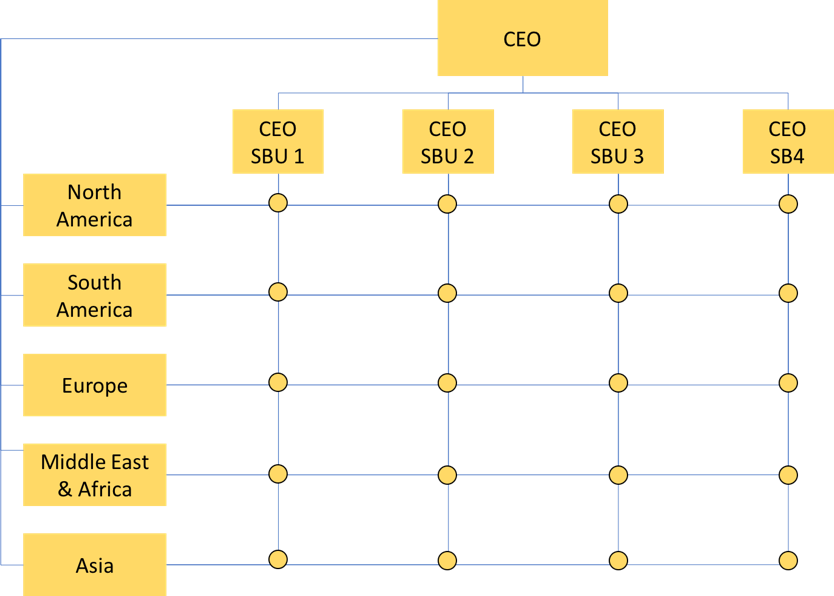Learning Outcomes
- Discuss common organizational structures and their historical origins
Fayol introduced chain of command, separation of jobs, power, and authority; Weber introduced the bureaucratic approach, and Taylor introduced job specialization. They championed the idea of structure within an organization to support efficiency and effective operations, but they never actually prescribed what an organizational structure should look like. In fact, organizational structure was a matter of choice and could differ from organization to organization. The only criterion for any proposed structure was that it be effective.
It wasn’t until the 1930s that organizational structures started becoming a bit more standard. As human relations theory took hold, researchers pondered an organizational structure that would allow for the needs, knowledge and opinions of employees to be better recognized.
An organization’s structure contains the six elements we described, and is laid out in such a way that employees are able to, be productive, make a profit, and accomplish the organization’s mission. Let’s take a look at some of the older, simpler organizational structures that companies have adopted. They’re still very much in use today.
The Simple Structure
The simple structure is aptly named because, well, there’s just not much to it. Simple structures have
- A low degree of departmentalization
- Wide spans of control
- Centralized authority
- Little formalization
The typical simple organization structure is flat:

This type of organizational structure is inexpensive to maintain and accountability is very clear. However, it’s difficult to maintain this kind of structure in any but a small organization. When this kind of organization structure increases in size, decision making slows down and the manager becomes overly burdened as the go-to decision maker for 50-100 people. It’s also risky – everything depends on one person, and should that person become ill or die, it puts the business in jeopardy.
The simple structure is often referred to as “pre-bureaucratic,” in that it lacks a standardization of tasks.
Bureaucratic Structure
Bureaucratic organizational structures take a chapter out of researcher Max Weber’s book, with clearly defined roles and responsibilities, hierarchical structure and respect for merit. This organizational structure is characterized by
- Highly routine operating tasks achieved through specialization
- Very formalized rules and regulations
- Functional departmentalization
- Centralized authority
- Narrow spans of control
- Decision making that follows the chain of command
Bureaucratic organizational structures are pyramid-like, with a CEO atop the chain of command in the corporate structure and a clear chain of command underneath. A bureaucratic organizational structure might look like this:

Bureaucratic organizational structures are ideal for organizations that require standardization (think banks, government offices). They’re ideal for organizations looking for the ability to perform standard tasks highly efficiently. Organizations with bureaucratic structures can get by with less talented people at lower levels, because decision making almost always falls to senior leaders.
The downfalls of bureaucratic structures are that they create silos – functional areas that often don’t talk to each other.
If the bureaucratic organizational structure looks familiar, it’s because it’s still tremendously popular with organizations today. Even as trends are changing toward teams and other types of structures that help businesses compete, organizations still hold onto the hierarchical structure of the bureaucratic structure as the norm.
The Matrix Structure

Matrix structure with geographic and product (SBU) structure.
A matrix structure creates dual lines of authority and combines functional and product departmentalization.
Ad agencies, hospitals, universities and management consulting firms use the matrix organizational structure. It’s easy to see why – by creating a dual reporting situation, a manager who’s working with a company on advertising would be able to manage a team that included a representative from each of the needed areas to get a campaign running—a graphic designer, a space planner and so on.
This structure allows for the efficient allocation of specialists. Information is more easily exchanged, as the contact between the different departments is increased.
The major disadvantage is the ability to get all these people moving at the same time, with clear priorities, to deliver a solution that’s on time and on budget. It can also create power struggles, because it tosses aside the idea of unity of command.
The matrix structure is among those that are considered “post-bureaucratic,” in that it does contrast in some ways with Weber’s ideals. That said, the matrix structure doesn’t really depart from Weber’s in that hierarchy and authority still exist here.
Practice Question
Organizational structures continue to evolve to meet the globalization and economic demands of today’s business world. Let’s take a look at some more modern types of structures.
Candela Citations
- History of Common Structures. Authored by: Freedom Learning Group. Provided by: Lumen Learning. License: CC BY: Attribution
- Image: The Simple Structure. Provided by: Lumen Learning. License: CC BY: Attribution
- Image: Bureaucratic Structure. Provided by: Lumen Learning. License: CC BY: Attribution
- Image: Matrix Structure with Geographic and Product (SBU) Structure. Authored by: David J. Thompson, PhD, and Lumen Learning. Located at: https://courses.lumenlearning.com/wmopen-principlesofmanagement/chapter/common-organizational-structures/. License: CC BY: Attribution
